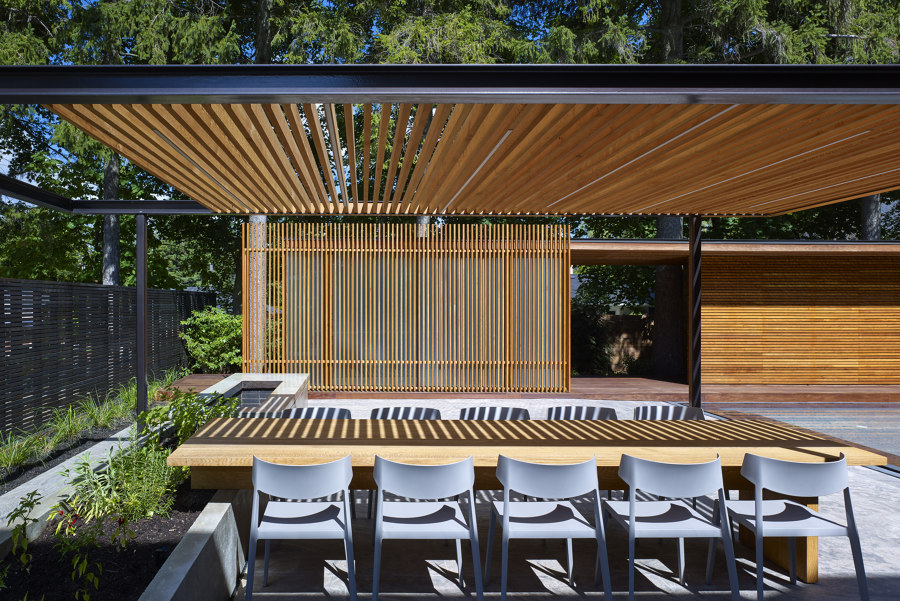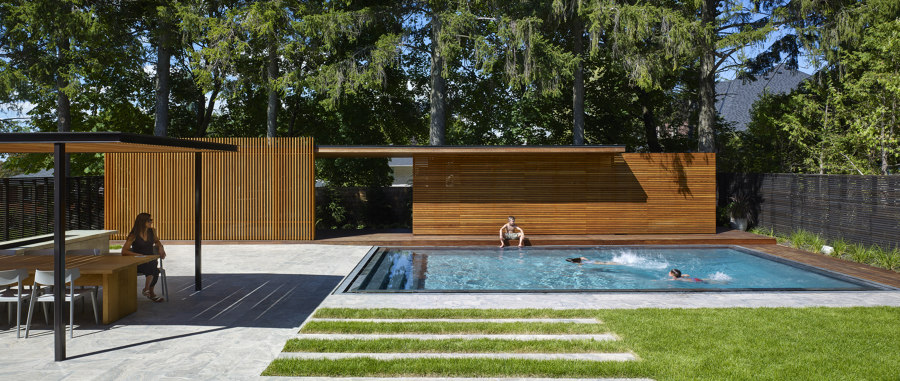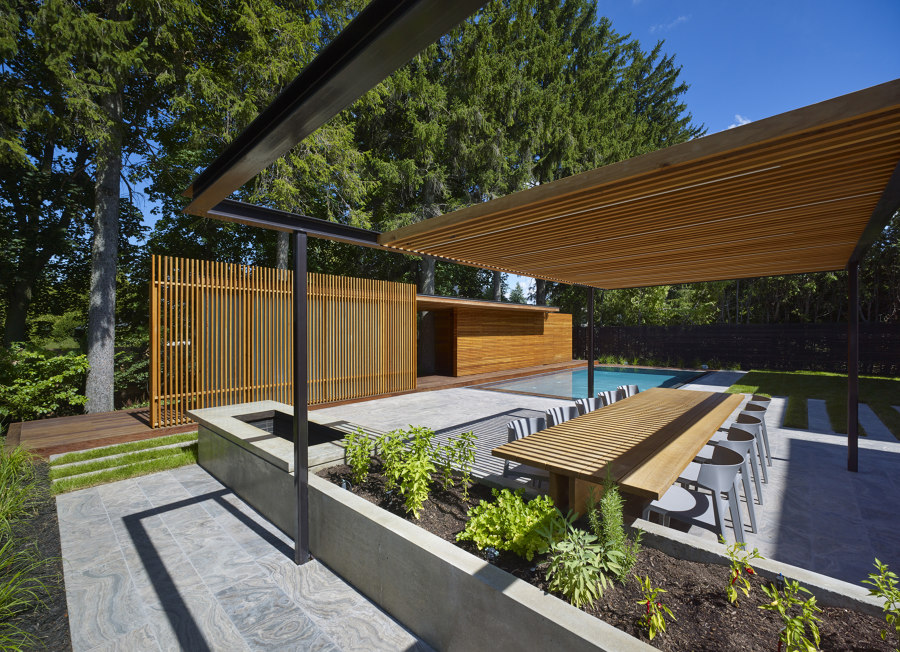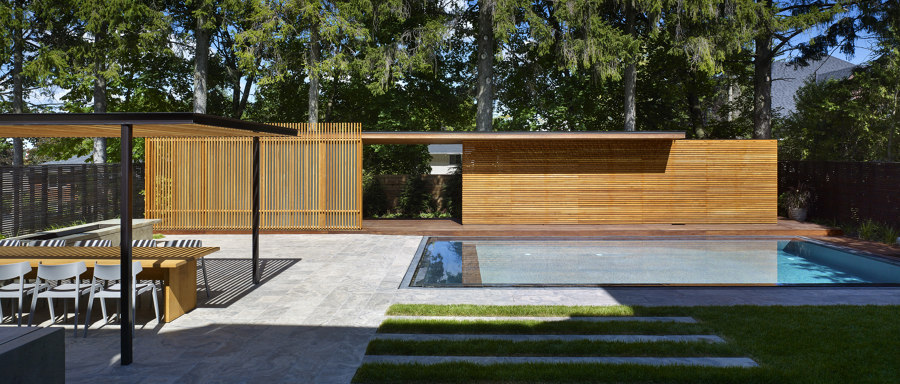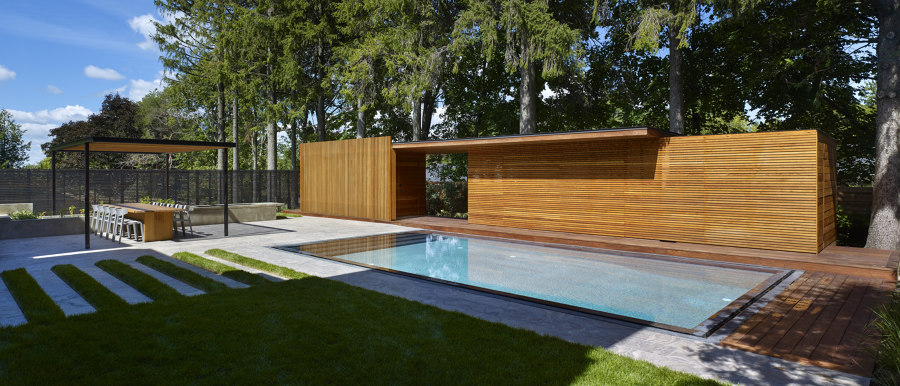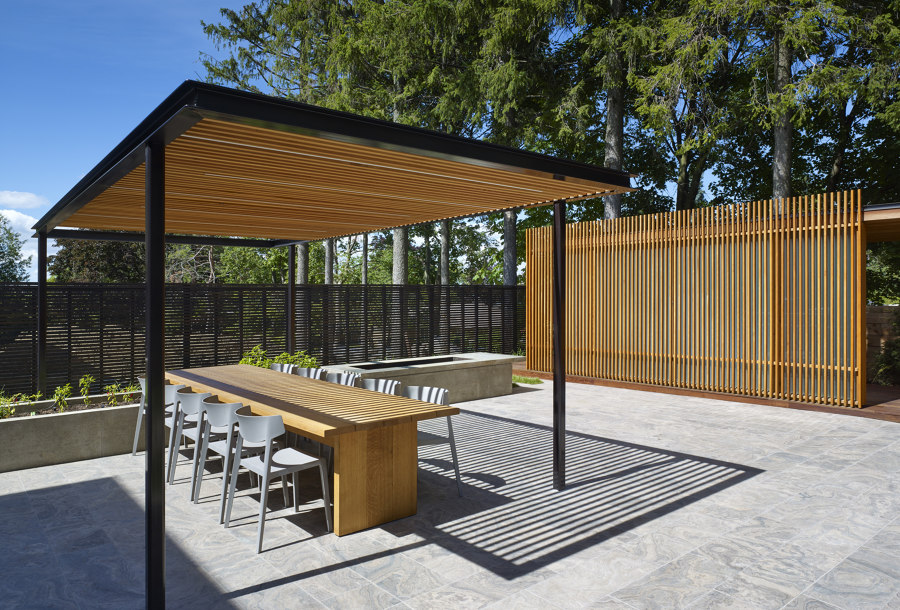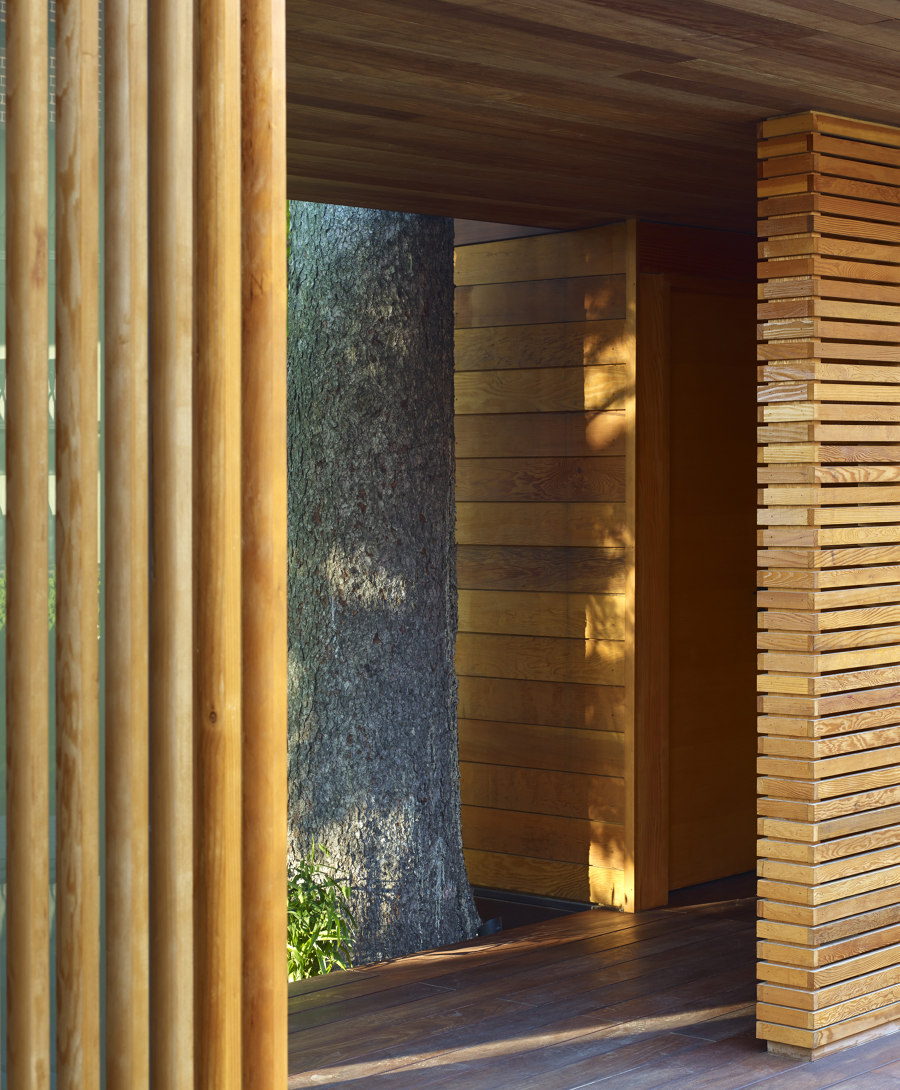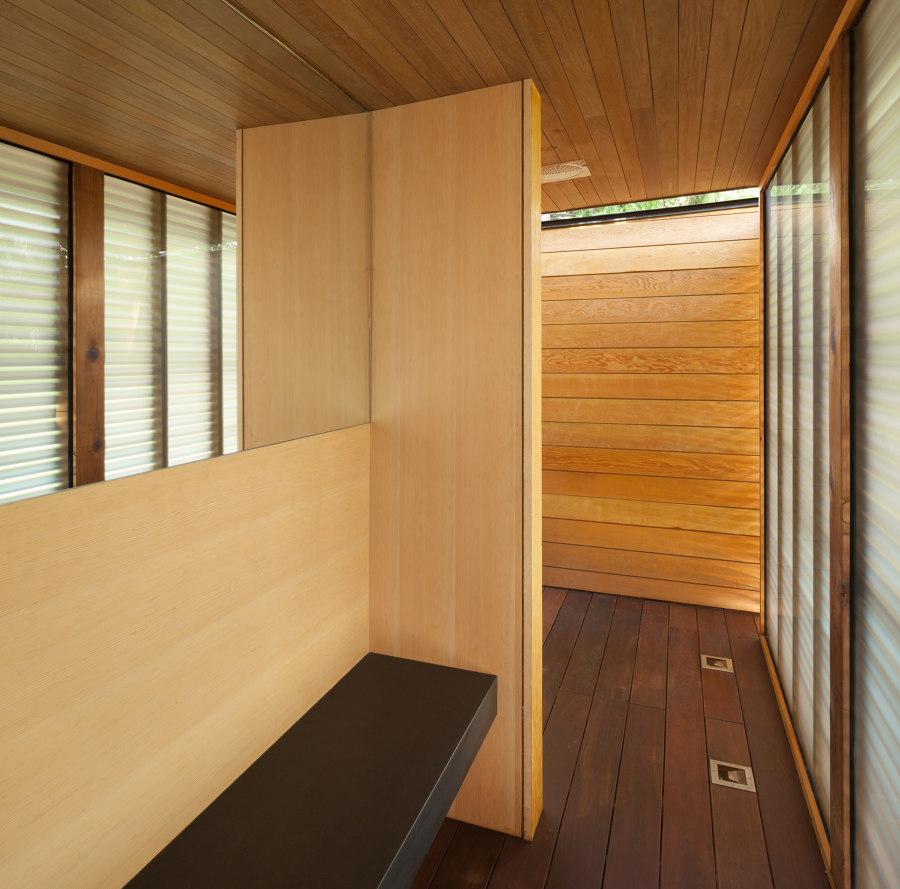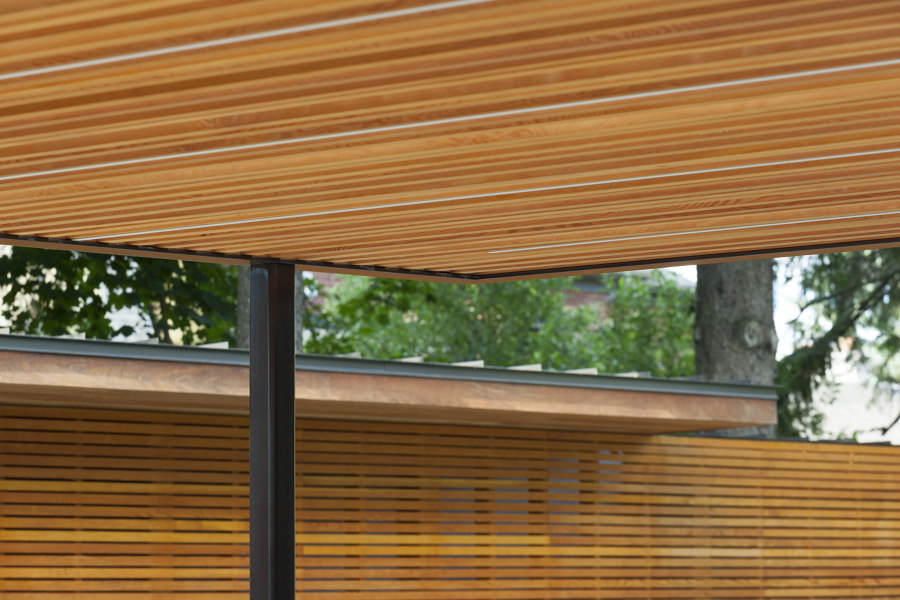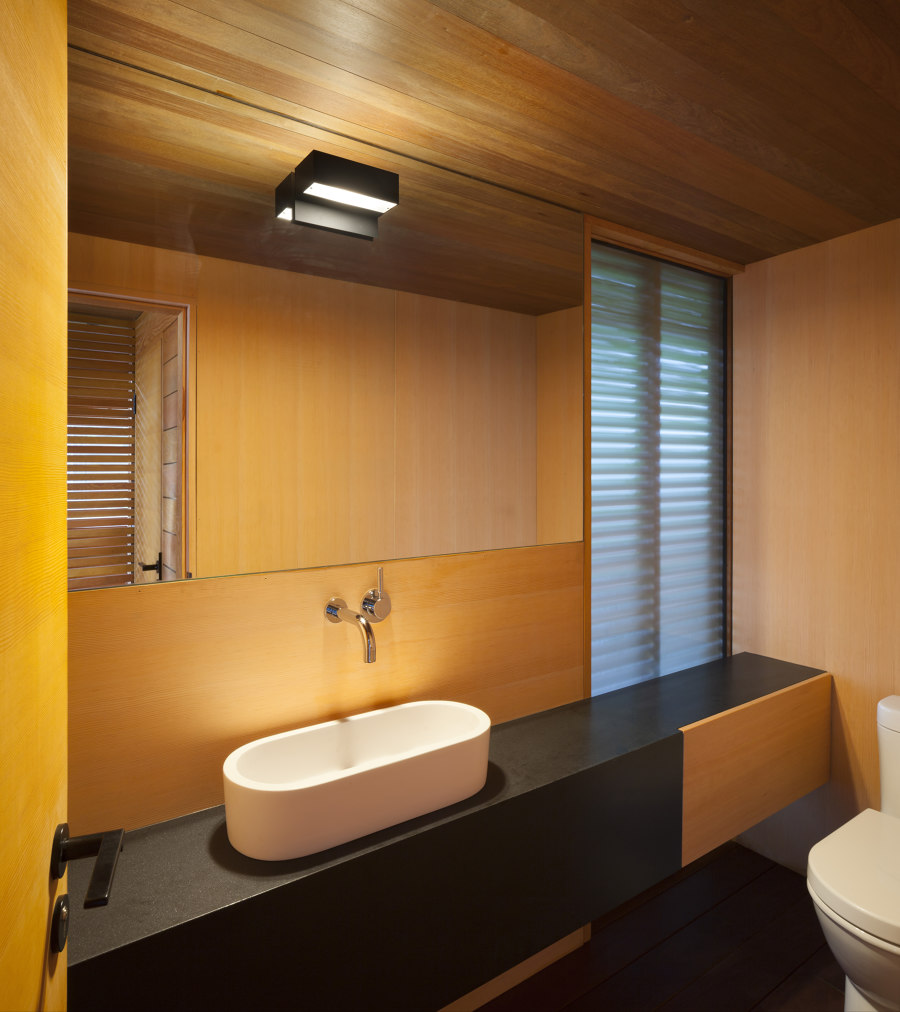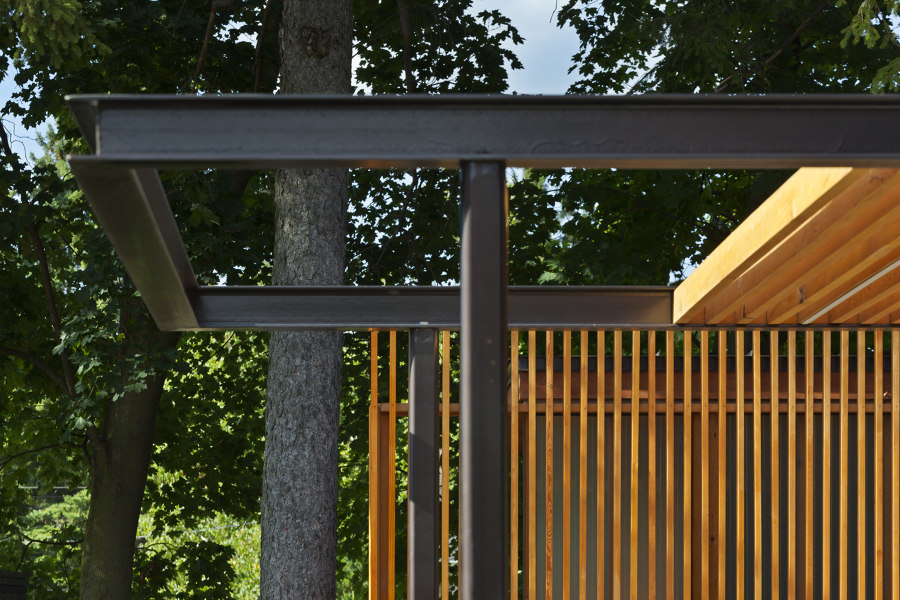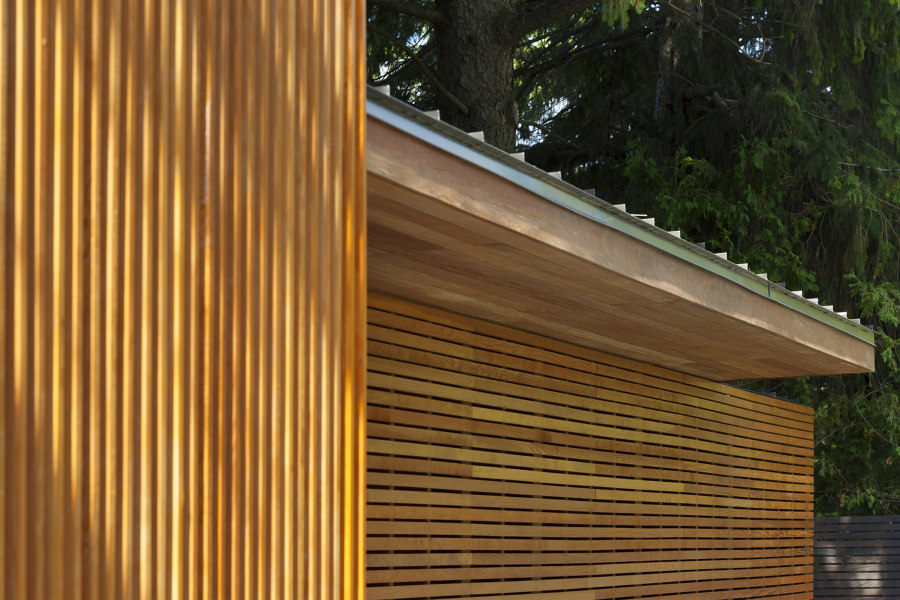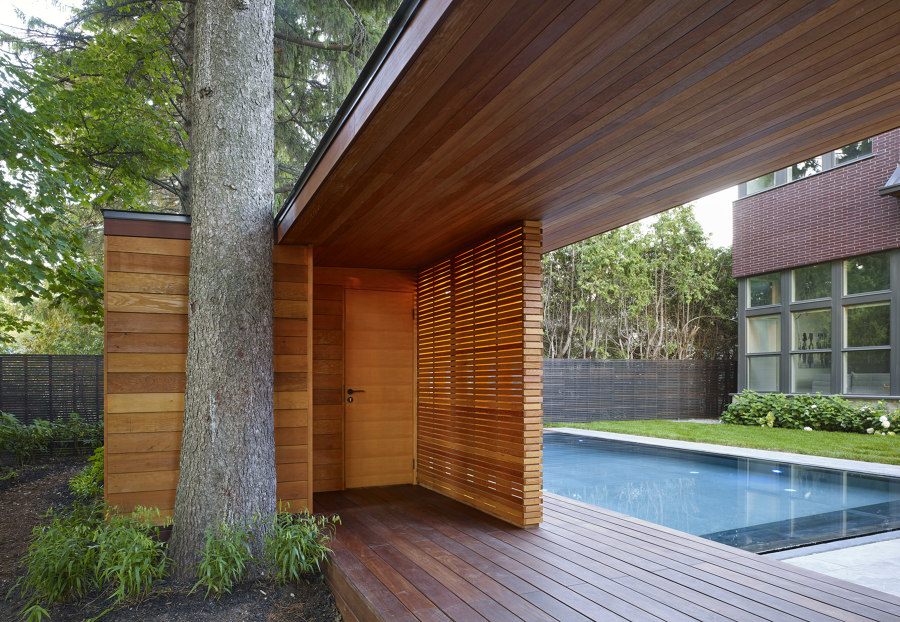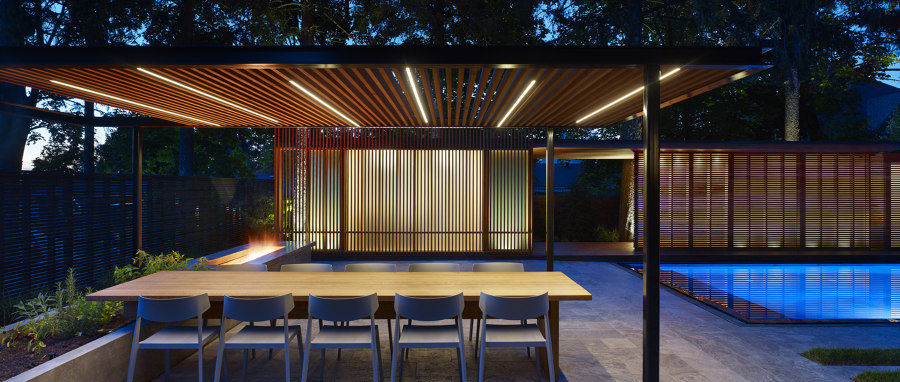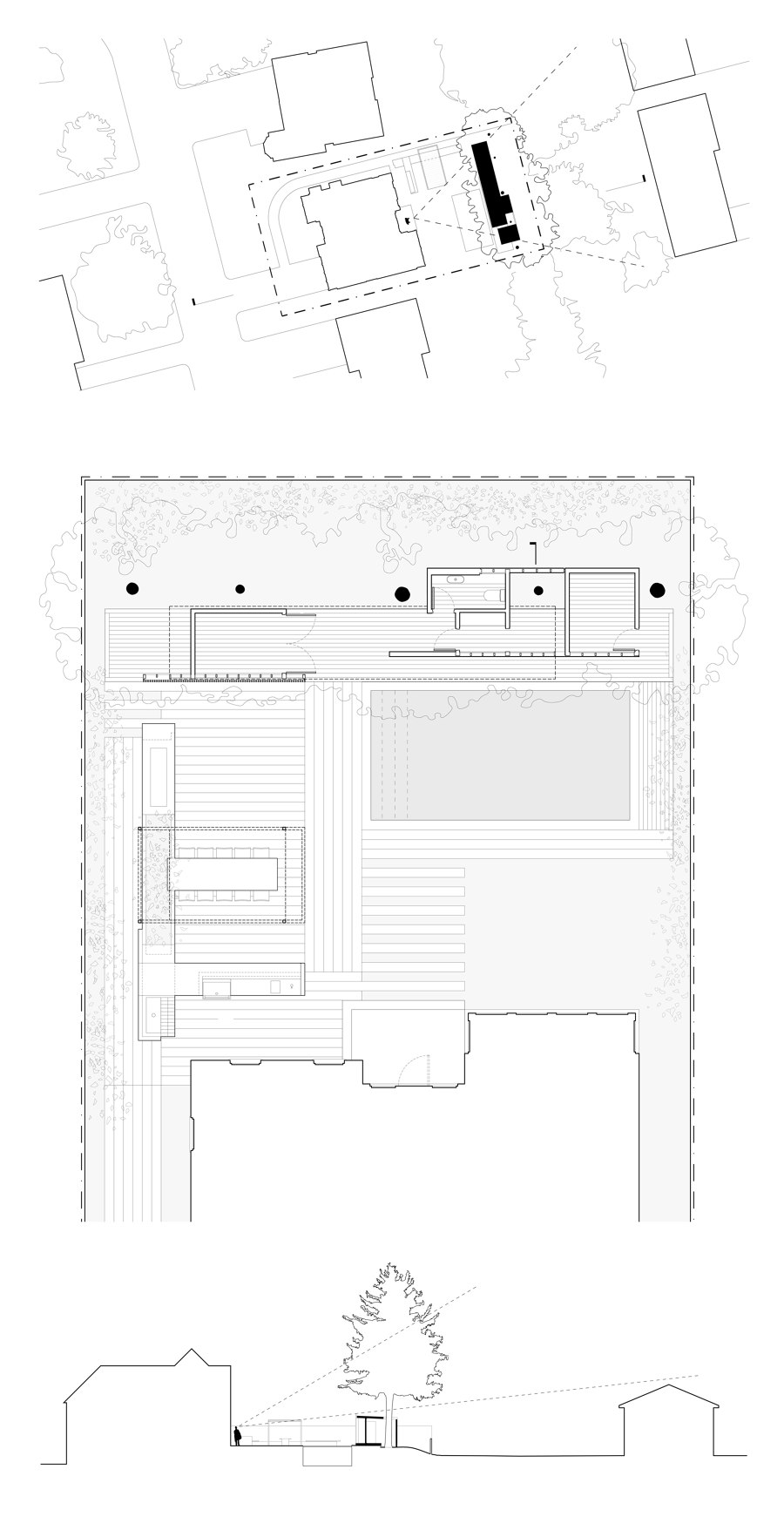The Clearview Pavilion, built for a young family of 4, is situated on a residential property in King City, Ontario. The encompassing subdivision was once the site of an apple orchard with a ‘clear view’ of Toronto, but now resembles a suburban monopoly board of brick and glass.
The rear yard, bare and modest in scale, is defined by a towering row of Norway Spruce flanking a dip in the ground plane along the rear lot line. This condition placed the neighbouring house in direct view from the main living space of the family’s home and rear yard.
Their requirements for the project were to preserve the century old trees while accommodating an extensive program (including a pool and pool house, outdoor kitchen, dining area, lounge, and play area), provide privacy, and create a sense of distance from neighbouring properties.
Taking a cue from the natural screen provided by the Norway Spruce, we situated the pool structure below its canopy and along the same axis. The design is conceived as a pavilion - an assembly of ground, wall, and roof planes – that works together with the treeline to edit out the view of the bungalow beyond.
Intentionally different from the brick and glass house, the low-lying pavilion is crafted almost exclusively in wood. A thoughtful composition of screening elements allows the pavilion to be at once opaque and transparent and at times luminous, and serves as the main focal point of the yard.
“Our Pavilion forms a backdrop that we experience from inside and outside. We cannot emphasize enough that no detail was left to chance.” - Daniel & Steph, Client.
The requirements for the project were to preserve the century-old trees while accommodating an extensive program, provide privacy, and create a sense of distance from the neighboring properties, all within a limited budget. Thus, dimensional lumber, both economical and lightweight, was used for nearly every structural element of the pavilion.
The conscientious decision to use helical piles in place of conventional foundations, minimized the impact to the trees while significantly saving costs. 2x6 joists allow the roof to float between the screened volumes. An 18 foot span within a 7-inch roof profile was achieved without the use of any steel.
Saddled into a grid of carefully positioned helical piles, the entire 60-foot long wood platform hovers above native grade in an effort to reduce its footprint.
A semi-transparent screen allows natural light to permeate all interior spaces, alleviating the need for artificial lighting, while still affording visual separation. In place of custom windows manufactured off-site, glass panels were designed into the exposed wall and screen framing so that every component of the integrated full height ‘windows’ could be milled and assembled on site. Natural ventilation, combined with the use of wood throughout, provide a comfortable interior environment.
Bordering the west edge of the yard, a wood-burning pizza oven and fire pit flanks a long and low concrete bar. At the midpoint of that concrete edge, a steel and wood trellis shelters a custom solid white oak table, and together with the pavilion, provides a sense of containment and spatially defines the dining and lounge areas.
The quality and character of the existing trees inspired a structure that transcends its function. A warm and inviting retreat, the pavilion intensifies one’s sense of the immediate and distant environments. At times solid, transparent, and - at night – translucent, this project was conceived out of a modest, yet complex set of design issues. Site and programmatic challenges created the opportunity to apply basic place-making principals with a creative exploration of wood assemblies and detailing in mind.
Design Team:
Amantea Architects:
Michael Amantea, BArch, OAA, MRAIC - Principal
Melissa Ng, M.Arch, BAS Hons - Intern Architect
Engineers: Andrew Au-Yeung, Brown and Co Engineering; Shannon Hilchie and Faet Lab
Contractor: Rob Vanderniet, Niet Custom Renovations
Table woodworker: Lubo Brezina, LUBO Design
Architectural concrete: Sandro Silvestri
